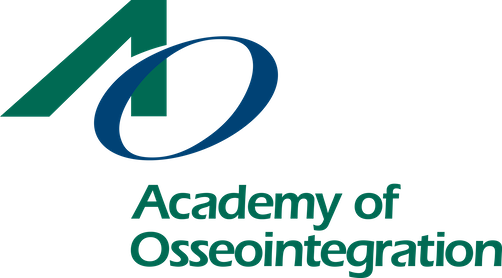-
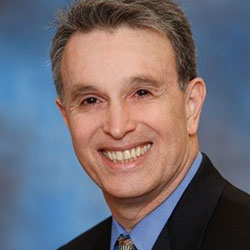 Robert Lemke, DDS, MD This presentation will review the biology of pain in the human body, history of pain management and available pain management options along with how each one affects the human body differently. I will also discuss the pharmacology of opioids and warning signs in patients that may be seeking opioids. The effects of an opioid addiction will also be discussed. Recorded - April 27, 2021
Robert Lemke, DDS, MD This presentation will review the biology of pain in the human body, history of pain management and available pain management options along with how each one affects the human body differently. I will also discuss the pharmacology of opioids and warning signs in patients that may be seeking opioids. The effects of an opioid addiction will also be discussed. Recorded - April 27, 2021 -
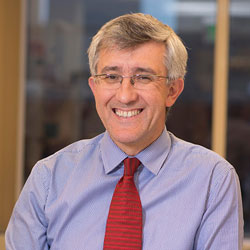 Alpdogan Kantarci, DDS, MS, PhD Peri-implant diseases present a major challenge in dental practice. Treatment options for advanced diseases around dental implants are limited. While there are several similarities between periodontal and peri-implant diseases in their pathogenesis and microbial etiologies, periodontal treatment strategies are not readily applicable to the treatment of peri-implant mucositis and peri-implantitis. One of the key differences is the characteristics of the implant surfaces. In this presentation, emerging preventive and therapeutic approaches will be discussed with an emphasis on geriatric patient population. Recorded - April 21, 2021
Alpdogan Kantarci, DDS, MS, PhD Peri-implant diseases present a major challenge in dental practice. Treatment options for advanced diseases around dental implants are limited. While there are several similarities between periodontal and peri-implant diseases in their pathogenesis and microbial etiologies, periodontal treatment strategies are not readily applicable to the treatment of peri-implant mucositis and peri-implantitis. One of the key differences is the characteristics of the implant surfaces. In this presentation, emerging preventive and therapeutic approaches will be discussed with an emphasis on geriatric patient population. Recorded - April 21, 2021 -
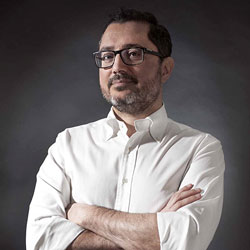 Luigi Canullo, DDS, PhD Recently published Literature showed that interactions between soft tissues and a foreign body, like an abutment, was mediated by the abutment material features and the tissue characteristics, so far defined only using the biotype. However, once analyzed in detail the soft tissue adaptation to the abutment, different variables were demonstrated to simultaneously interact in this scenario. In fact, the soft tissue expression appeared to depend not only on the histologic characteristics but mostly on the individual inflammatory and regenerative patterns (epigenetics). At the same time, the prosthetic work flow was also demonstrated to influence the healing displays, as well as the abutment surface features, which could be didactically summarized using a macro-, micro- and nano- scale. In fact, while a narrower macro morphology was clearly associated to a better bone level maintenance and better esthetic outcomes, moderately rough microtopography was shown to enhance the connective/metallic adhesion. An even more magnified capture of the situation revealed that more hydrophilic and more decontaminated surfaces presented a stronger tissue/metallic adhesion, correlated to a consequent positive impact on bone level changes. Finally, last but not least parameter, in a microbiological contaminated environment like the oral cavity, microbiological colonization of the abutment surface was shown to influence the soft tissue/foreign body interaction. Recorded - April 13, 2021
Luigi Canullo, DDS, PhD Recently published Literature showed that interactions between soft tissues and a foreign body, like an abutment, was mediated by the abutment material features and the tissue characteristics, so far defined only using the biotype. However, once analyzed in detail the soft tissue adaptation to the abutment, different variables were demonstrated to simultaneously interact in this scenario. In fact, the soft tissue expression appeared to depend not only on the histologic characteristics but mostly on the individual inflammatory and regenerative patterns (epigenetics). At the same time, the prosthetic work flow was also demonstrated to influence the healing displays, as well as the abutment surface features, which could be didactically summarized using a macro-, micro- and nano- scale. In fact, while a narrower macro morphology was clearly associated to a better bone level maintenance and better esthetic outcomes, moderately rough microtopography was shown to enhance the connective/metallic adhesion. An even more magnified capture of the situation revealed that more hydrophilic and more decontaminated surfaces presented a stronger tissue/metallic adhesion, correlated to a consequent positive impact on bone level changes. Finally, last but not least parameter, in a microbiological contaminated environment like the oral cavity, microbiological colonization of the abutment surface was shown to influence the soft tissue/foreign body interaction. Recorded - April 13, 2021 -
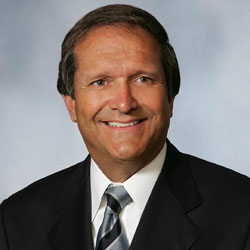 Roger Wise, DDS, MS The orthodontic profession has only recently focused its attention towards patient driven diagnosis and treatment planning. It is difficult to imagine practicing dentistry today without the utilization of dental implants. Smile esthetics can be very challenging or even compromised when implants are involved. In problem-oriented implant treatment planning the orthodontist may help establish a diagnosis that identifies possible improvement or even correction of hard and soft tissue. This lecture will also demonstrate how to establish occlusal and/or spacial relationships prior to implant placement. Recorded - March 31, 2021
Roger Wise, DDS, MS The orthodontic profession has only recently focused its attention towards patient driven diagnosis and treatment planning. It is difficult to imagine practicing dentistry today without the utilization of dental implants. Smile esthetics can be very challenging or even compromised when implants are involved. In problem-oriented implant treatment planning the orthodontist may help establish a diagnosis that identifies possible improvement or even correction of hard and soft tissue. This lecture will also demonstrate how to establish occlusal and/or spacial relationships prior to implant placement. Recorded - March 31, 2021 -
 Robert Lemke, DDS, MD This is an update after one-year of being in the trenches of COVID-19. What do we know now. Why we will need masks for another year and which ones to avoid. I will review immunology as it applies to COVID-19. Vaccines from history, phase studies, mechanisms, herd protection and mutations will all be reviewed. Finally an intro to being a vaccine injection center will be introduced. Recorded - March 4, 2021
Robert Lemke, DDS, MD This is an update after one-year of being in the trenches of COVID-19. What do we know now. Why we will need masks for another year and which ones to avoid. I will review immunology as it applies to COVID-19. Vaccines from history, phase studies, mechanisms, herd protection and mutations will all be reviewed. Finally an intro to being a vaccine injection center will be introduced. Recorded - March 4, 2021 -
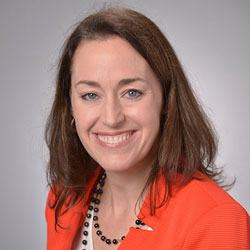 Lourdes Ann Christopher, DDS, MS Soft tissue grafting is a viable treatment option for root coverage and enhancement of gingival biotype as well as the prevention of future gingival recession around teeth. Soft tissue grafting techniques around teeth have evolved over the years resulting in better and more predictable clinical outcomes. Research has found that like teeth, dental implants have better long-term prognosis when they have improved soft tissue quality and thickness. This presentation will give a background on the rationale for soft tissue grafting around teeth and dental implants. Various advanced surgical techniques will be presented with an emphasis on timing to improve outcomes both in terms of patient morbidity and long-term stability. There will be discussion of the use of L-PRF, homeopathic supplements, lasers and biologics to enhance wound healing as well as post grafting frenectomy and vestibular extensions to stabilize the gingival margin post hard and soft tissue grafting. Recorded - February 16, 2021
Lourdes Ann Christopher, DDS, MS Soft tissue grafting is a viable treatment option for root coverage and enhancement of gingival biotype as well as the prevention of future gingival recession around teeth. Soft tissue grafting techniques around teeth have evolved over the years resulting in better and more predictable clinical outcomes. Research has found that like teeth, dental implants have better long-term prognosis when they have improved soft tissue quality and thickness. This presentation will give a background on the rationale for soft tissue grafting around teeth and dental implants. Various advanced surgical techniques will be presented with an emphasis on timing to improve outcomes both in terms of patient morbidity and long-term stability. There will be discussion of the use of L-PRF, homeopathic supplements, lasers and biologics to enhance wound healing as well as post grafting frenectomy and vestibular extensions to stabilize the gingival margin post hard and soft tissue grafting. Recorded - February 16, 2021 -
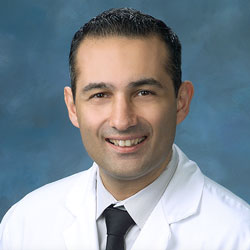 T. Cem Sayin, DDS, PhD Clinicians are confronted with difficult decisions regarding whether a tooth with pulpal and/or periapical disease should be saved through endodontic treatment or be extracted and replaced with an implant. This lecture will review the endodontic and implant literature as well as the related factors that need to be considered by the clinician affecting decision making for their patients. Recorded - February 03, 2021
T. Cem Sayin, DDS, PhD Clinicians are confronted with difficult decisions regarding whether a tooth with pulpal and/or periapical disease should be saved through endodontic treatment or be extracted and replaced with an implant. This lecture will review the endodontic and implant literature as well as the related factors that need to be considered by the clinician affecting decision making for their patients. Recorded - February 03, 2021 -
 Preetinder Singh, DDS, MS Bone regeneration is often needed prior to dental implant treatment due to the lack of adequate quantity and quality after infectious diseases. The greatest regenerative power can be obtained with autologous tissue, primarily the bone alive, taken from the same site or adjacent sites, up to the use centrifugation of blood with the selection of the parts with the greatest potential regenerative. In fact, various techniques and technologies were chronologically successive to cope with an ever better preparation of these concentrates of blood. Our aim is to know these advances and discuss the ways in which platelet concentrates may provide such unexpected beneficial therapeutic effects. Most of the growth factors derived from autologous blood is released upon platelet activation, and their clinical use has been popularized with Platelet-rich plasma (PRP), Platelet rich fibrin (PRF) & its advancements namely A-PRF & i-PRF, Concentrated Growth Factors (CGF), Sticky Bone Concept etc. It is time to use this ‘blood’ in different ways to achieve regenerative potentials in the field of implant dentistry. Recorded - January 20, 2021
Preetinder Singh, DDS, MS Bone regeneration is often needed prior to dental implant treatment due to the lack of adequate quantity and quality after infectious diseases. The greatest regenerative power can be obtained with autologous tissue, primarily the bone alive, taken from the same site or adjacent sites, up to the use centrifugation of blood with the selection of the parts with the greatest potential regenerative. In fact, various techniques and technologies were chronologically successive to cope with an ever better preparation of these concentrates of blood. Our aim is to know these advances and discuss the ways in which platelet concentrates may provide such unexpected beneficial therapeutic effects. Most of the growth factors derived from autologous blood is released upon platelet activation, and their clinical use has been popularized with Platelet-rich plasma (PRP), Platelet rich fibrin (PRF) & its advancements namely A-PRF & i-PRF, Concentrated Growth Factors (CGF), Sticky Bone Concept etc. It is time to use this ‘blood’ in different ways to achieve regenerative potentials in the field of implant dentistry. Recorded - January 20, 2021 -
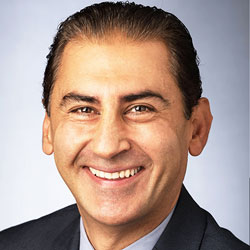 Ilser Turkyilmaz, DDS, PhD Implant-supported fixed dental prostheses improve the quality of life of edentulous patients experiencing functional and esthetic problems associated with complete dentures. CAD/CAM technology has recently revolutionized the field of implant dentistry. CAD/CAM surgical guides have greatly improved the predictability of implant surgery and the CAD/CAM fabrication of frameworks has resulted in elimination of distortion, better fit, fewer fabrication steps, and faster turn-around. All of these advancements offer improved experience for the patient, decreased treatment time, and greater accessibility. Basic clinical and laboratory procedures for restoring edentulous arches with CAD/CAM surgical guides and implant-supported fixed prostheses will be discussed. Recorded - January 11, 2021
Ilser Turkyilmaz, DDS, PhD Implant-supported fixed dental prostheses improve the quality of life of edentulous patients experiencing functional and esthetic problems associated with complete dentures. CAD/CAM technology has recently revolutionized the field of implant dentistry. CAD/CAM surgical guides have greatly improved the predictability of implant surgery and the CAD/CAM fabrication of frameworks has resulted in elimination of distortion, better fit, fewer fabrication steps, and faster turn-around. All of these advancements offer improved experience for the patient, decreased treatment time, and greater accessibility. Basic clinical and laboratory procedures for restoring edentulous arches with CAD/CAM surgical guides and implant-supported fixed prostheses will be discussed. Recorded - January 11, 2021

